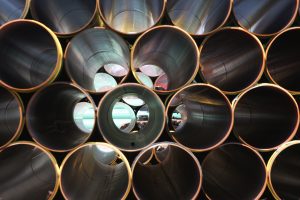This audio was created using Microsoft Azure Speech Services
This summer, the state of California proposed changes to regulations aimed at improving safety at oil refineries. You can see the full release here.
“Key features of the proposed regulations include:
- Increased employer accountability for the mechanical integrity of refinery equipment;
- Requirements to adopt inherently safer designs and systems, to the greatest extent feasible;
- Increased employee involvement in all aspects of the safety and prevention program;
- Periodic workplace safety culture assessments to evaluate whether management is appropriately emphasizing safety over production pressures;
- Authority for refinery personnel to shut down a unit if needed in the event of an unsafe condition or emergency and provisions for anonymous reporting of safety hazards;
- Requirements for investigations to determine root causes of any incidents that do occur and develop interim and permanent corrective measures in response; and
- Annual public reporting of refinery safety metrics”
I can’t argue with any of the points specified in the proposal. But of course, implementation is another animal all together. However, I think global technology trends will be able to help refineries adhere to these regulations.
For instance, the Industrial Internet of Things will enable plant personnel to continuously, and remotely, monitor mechanical equipment in the refinery. Various sensors can be placed on equipment to measure vibrations, heat output, flow rates, and acoustics among other variables. All of this data can be collected and analyzed by equipment experts, either on site or in a central location. In fact, many vendors of mechanical equipment offer this as a service and many other companies (including Schneider Electric) offer this service as well providing predictive maintenance capability to mechanical equipment.
 Another technology, Operator Training Simulators (OTSs), has developed as a result of the aging workforce and the impending “great crew shift.” This is a huge driver in O&G. We need to manage this workforce transition efficiently and effectively. Many companies have turned to OTS as a way to get the new workforce up-to-speed as quickly as possible without sacrificing effectiveness.
Another technology, Operator Training Simulators (OTSs), has developed as a result of the aging workforce and the impending “great crew shift.” This is a huge driver in O&G. We need to manage this workforce transition efficiently and effectively. Many companies have turned to OTS as a way to get the new workforce up-to-speed as quickly as possible without sacrificing effectiveness.
In fact, OTSs have proven to be more effective and promote knowledge retention longer than the traditional on-the-job training. Many software vendors, including Schneider Electric, not only provide OTS, but enhanced OTS with virtual reality to allow for control room operators to interact with field personnel who are working in a virtual plant to develop teamwork and further enhance safe operations.
I think these regulations are important not only to the workers in the plant, but the surrounding communities. The technology exists to make everyone safer; we should be using it as much as possible.
To learn more about plant safety and workforce optimization solutions, please download our free Workforce Optimization Methodology Whitepaper.


